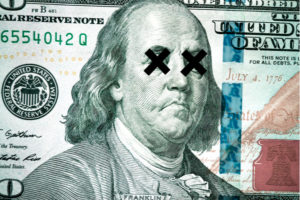Caitlin Ostroff reports at The Wall Street Journal on traders favoring the euro over the dollar in light of differences in the response to COVID-19 in each currency’s area. She writes:
The euro traded near a two-year high against the dollar on signs that Europe has largely slowed down coronavirus infections and taken steps toward bolstering its weakest economies.
The currency used by the 19 eurozone nations ticked down 0.3% Tuesday to about $1.1722 a euro, remaining near a level last seen in September 2018. That leaves the euro’s rally so far in July at 4.3%, on course for its best monthly performance in four years.
The euro’s advance in part reflects concerns about the U.S.’s uneven progress in halting fresh infections and the implications for economic recovery, which have weighed on the dollar this month. Europe looks good in comparison: Social-distancing measures, wearing face masks and washing hands helped limit the spread of coronavirus in much of the region as lockdown measures were lifted.
“We had the notion before the virus that the eurozone was a big drag to the global economy,” said Francesco Pesole, a foreign-exchange strategist at ING Bank. “After these coronavirus lockdowns have eased, markets have started to change their mind.”
In contrast to the euro’s rally, the dollar has weakened sharply. The ICE U.S. Dollar Index, which measures the greenback against a basket of other currencies, shed 3.6% this month to fall to its lowest level since September 2018.





